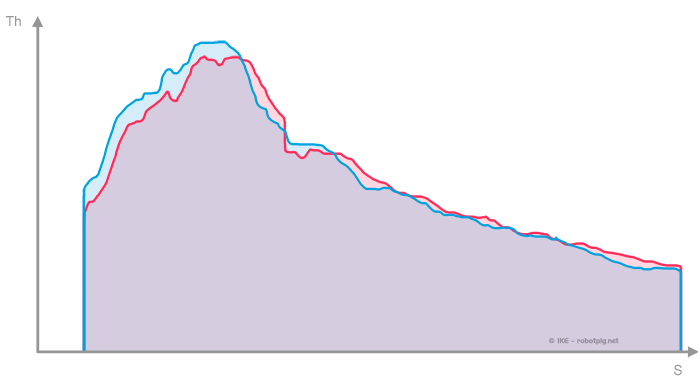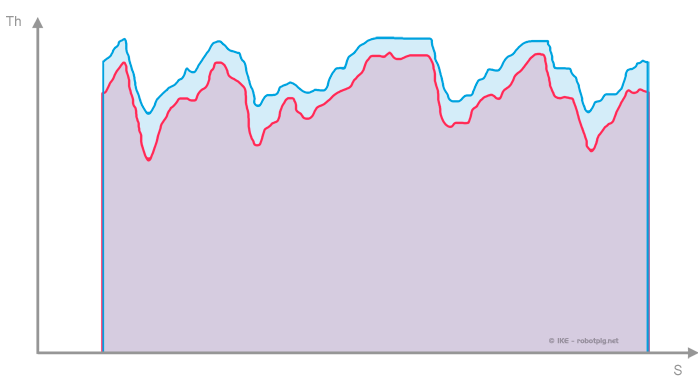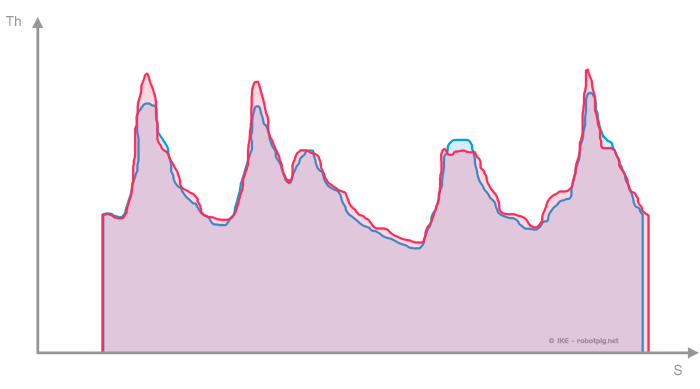application B: max power
(higher maximum power doesn't necessarily equates to a more powerful car)
In this case we will use a very interesting experiment conducted by BIKE magazine (5/2005). They tuned the engine of a Yamaha R6 in order to produce more power at low revs at the expense of the maximum power. The modifications were very simple. Most riders that drove the bike in direct comparison to a stock one reported that they thought the new bike was more powerful.
Considering the gearing remains unchanged the dyno chart published in the magazine is used to plot the comparative thrust curves diagram below:
 The retuned R6 (blue) has a significant advantage in lower speeds where it yields more thrust than the stock R6. The latter has the advantage as the speed increases.
The retuned R6 (blue) has a significant advantage in lower speeds where it yields more thrust than the stock R6. The latter has the advantage as the speed increases.
With the quite low speed of 70% in respect to the original (car) lap time the retuned bike has a clear advantage. The riders that tested the new bike used it in similar velocities, more representative of every day driving.
 If we raise the reference velocity to that of 200% of the original lap (the bike is much faster than the car used for that) we now have a different case.
If we raise the reference velocity to that of 200% of the original lap (the bike is much faster than the car used for that) we now have a different case.
 With the increase velocities the slight advantage of the stock bike in the mid and higher section of the velocity span is translated to a bigger thrust reserve than the retuned model across the lap.
With the increase velocities the slight advantage of the stock bike in the mid and higher section of the velocity span is translated to a bigger thrust reserve than the retuned model across the lap.
This is also the case in racing bikes. They may sacrifice the shape of the power curve for a bigger thrust advantage in the narrow velocity span where they are demanded to race. With conjunction to the transmission gearing one can optimize the available thrust for a certain circuit or race.